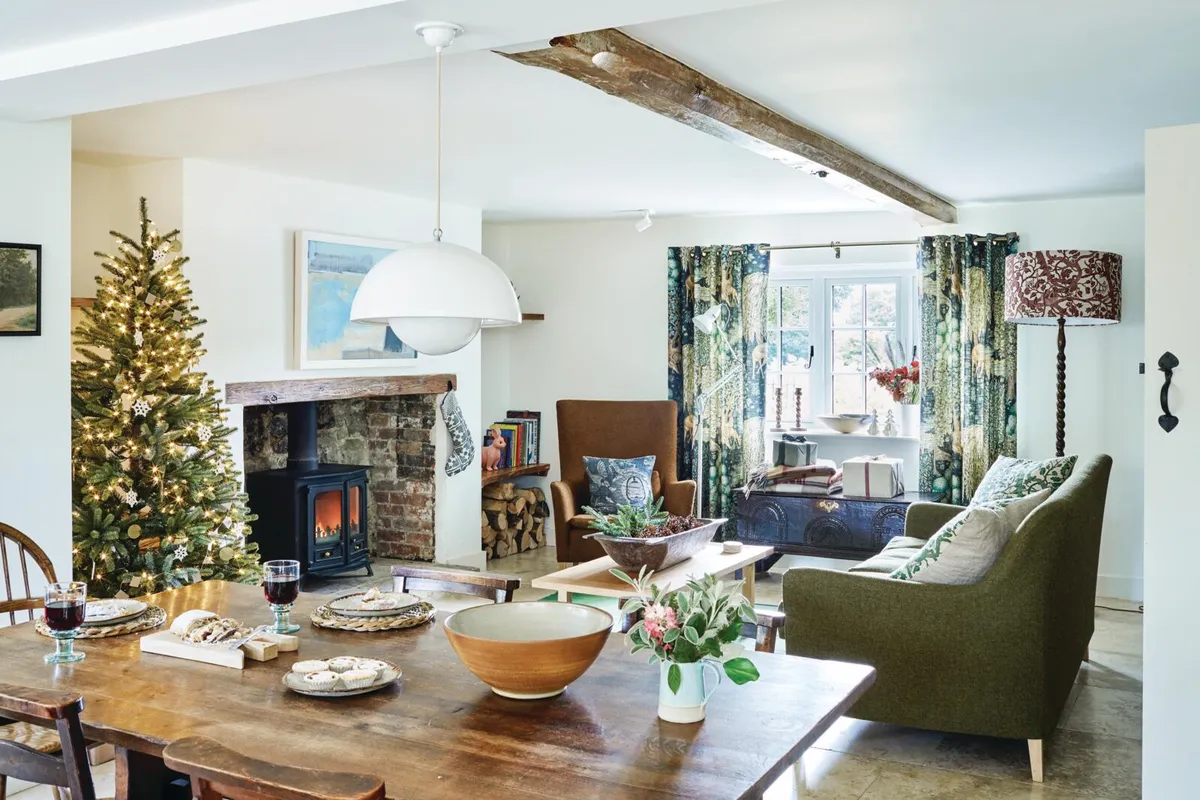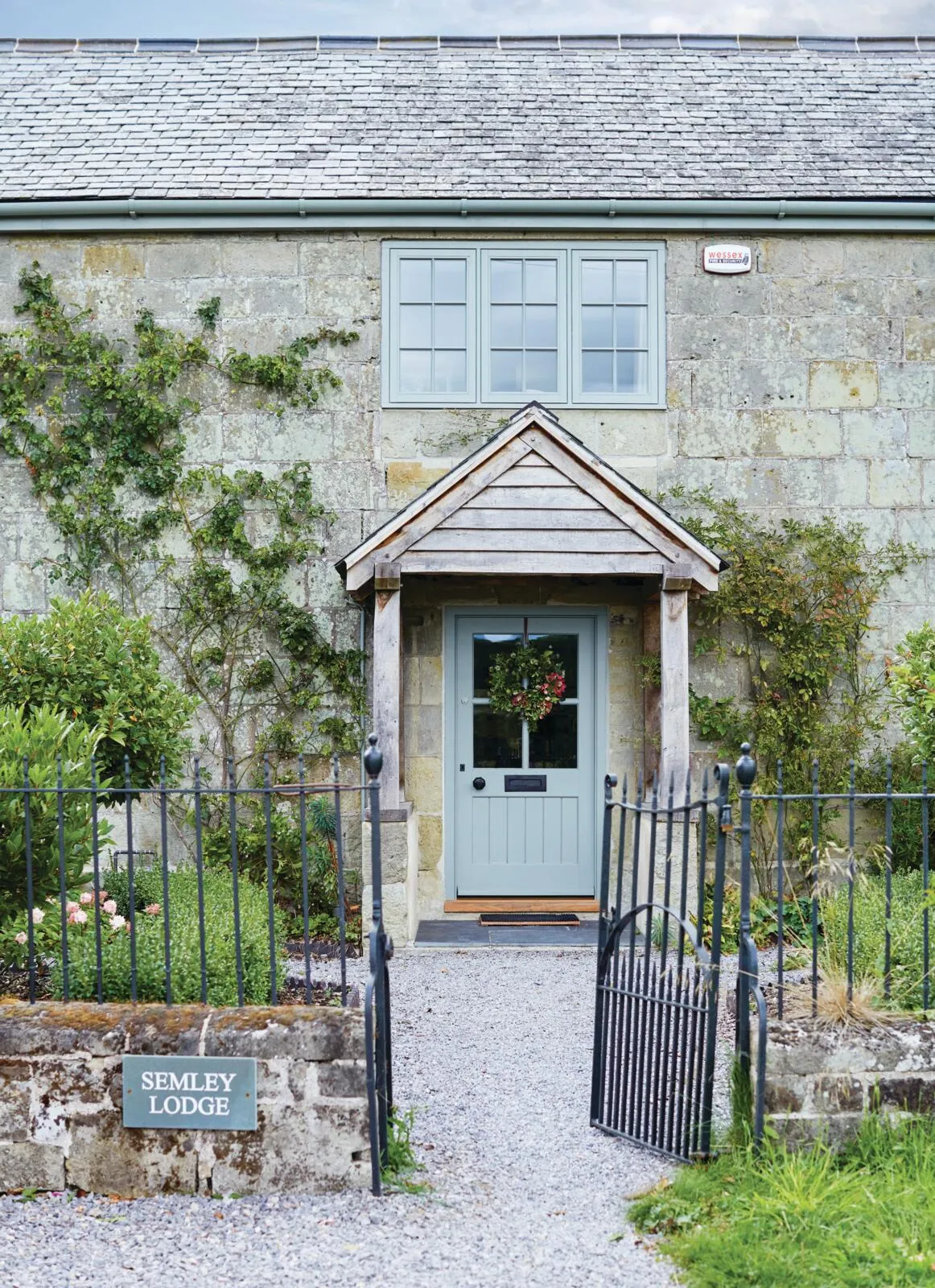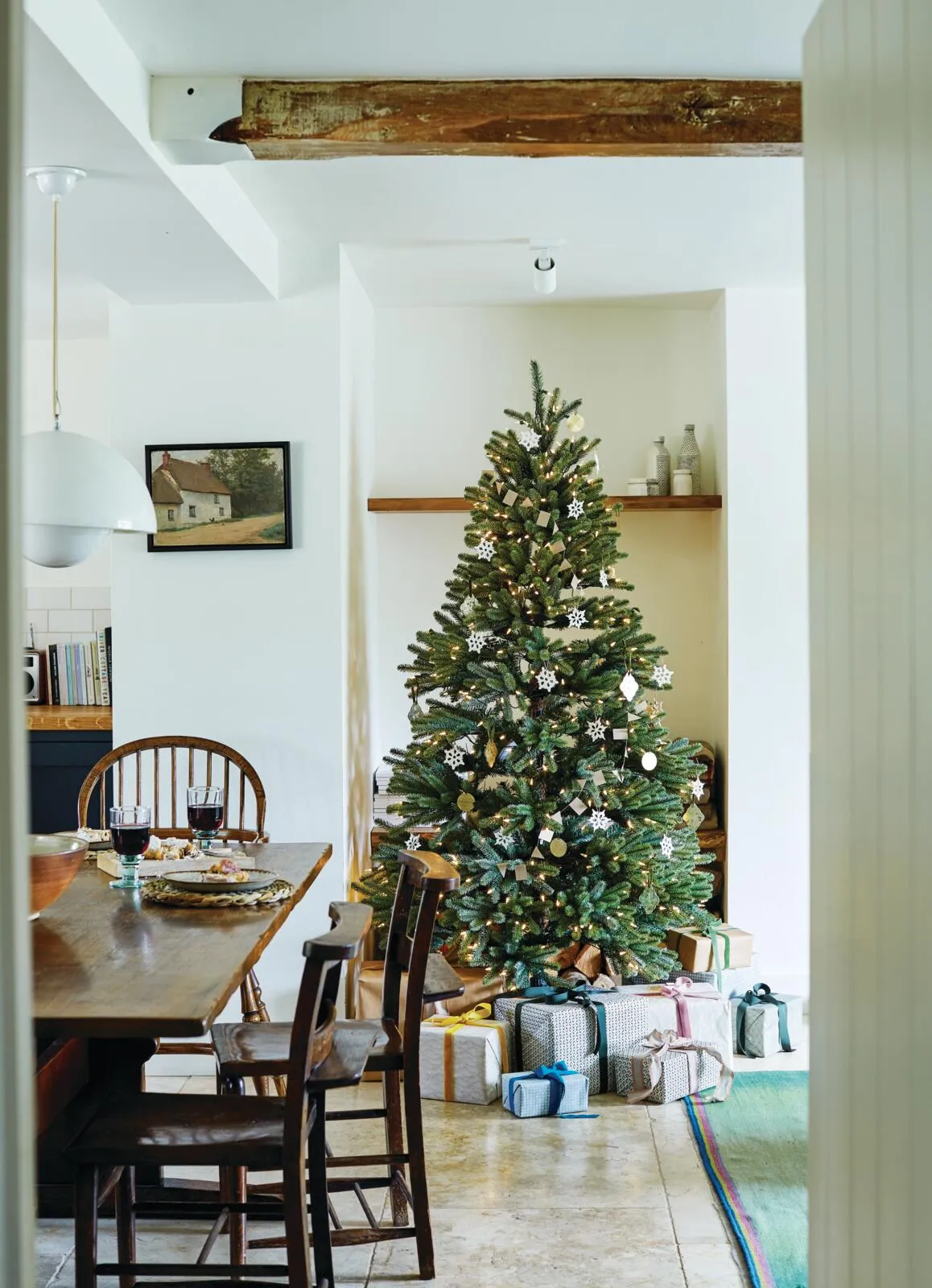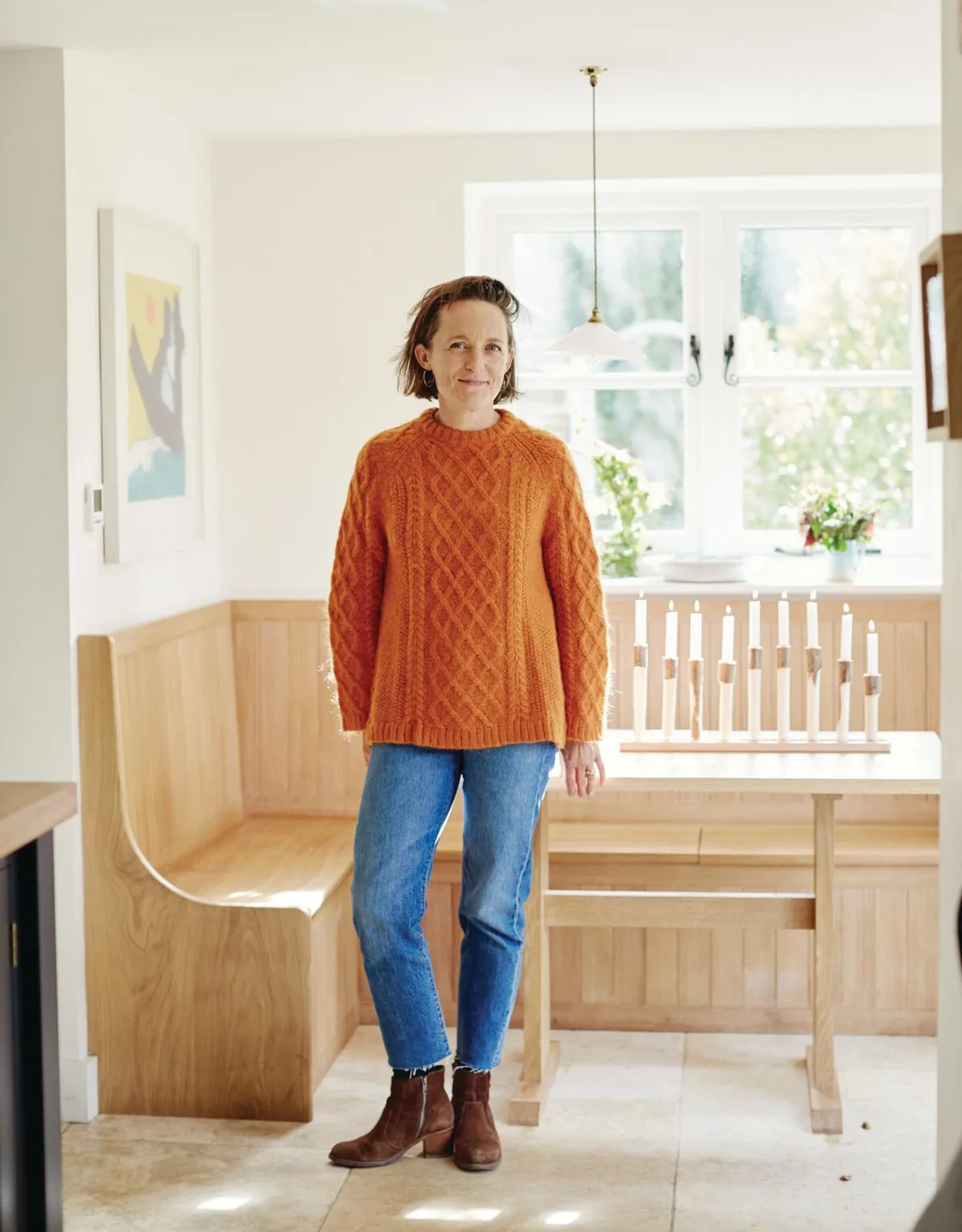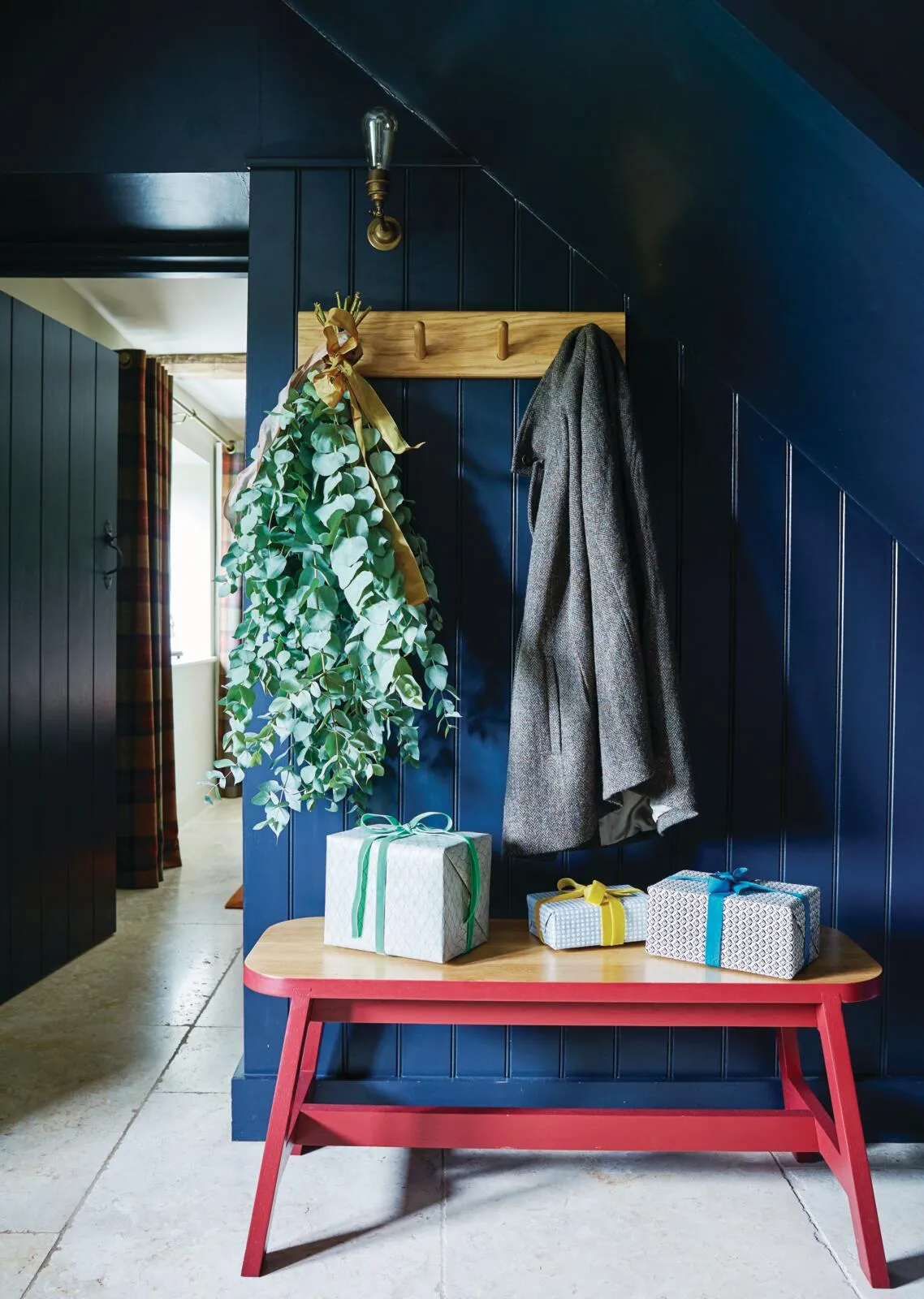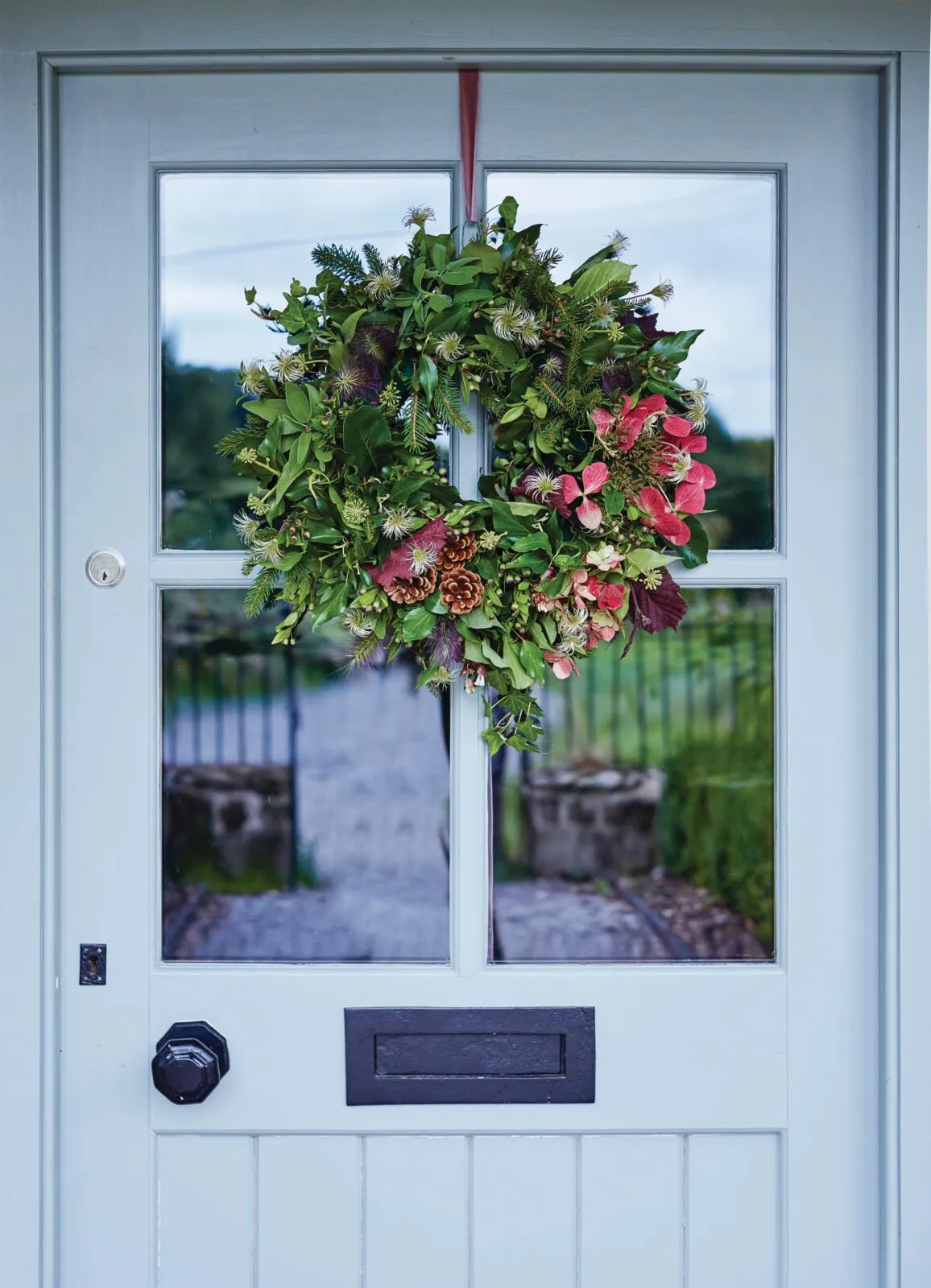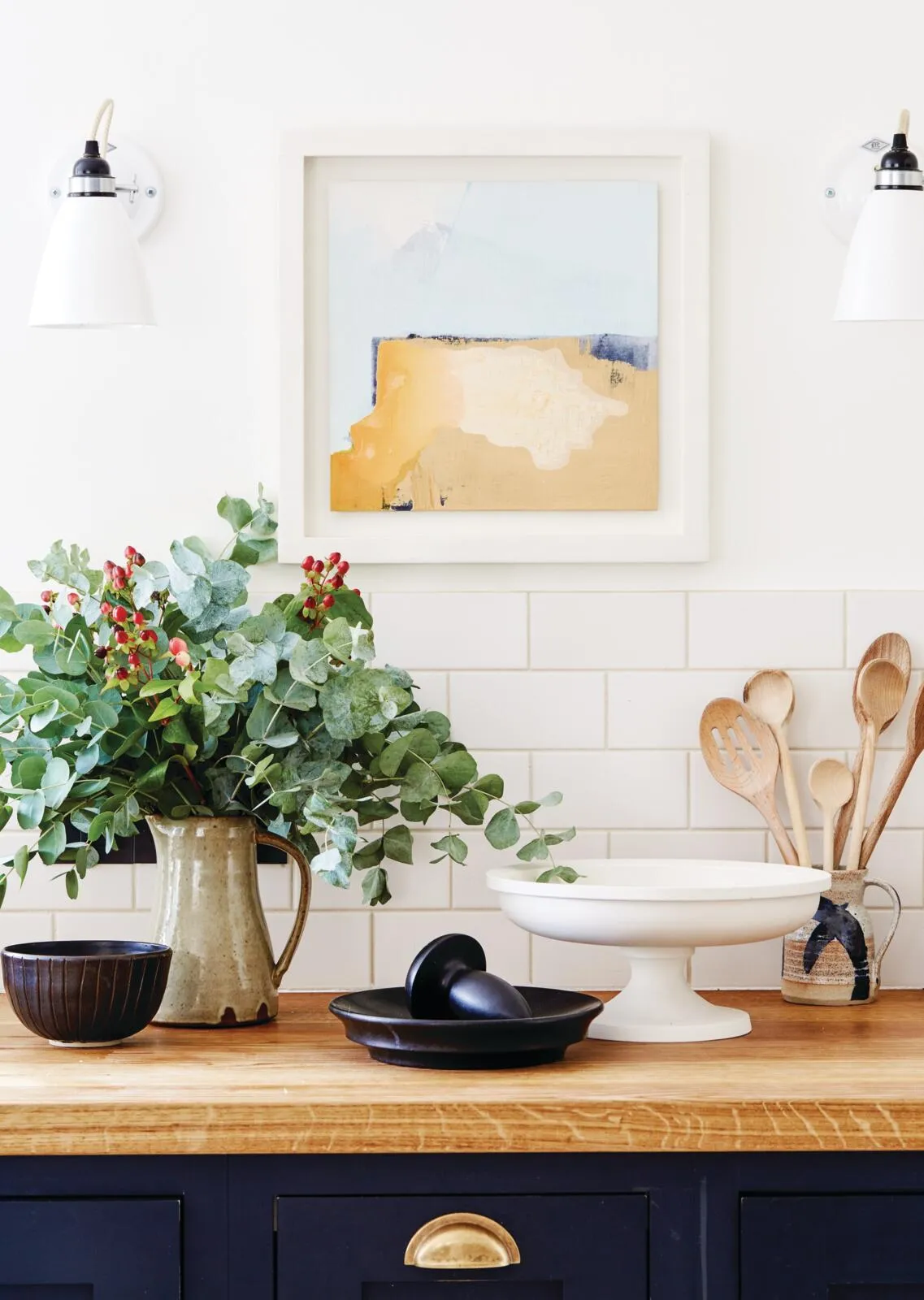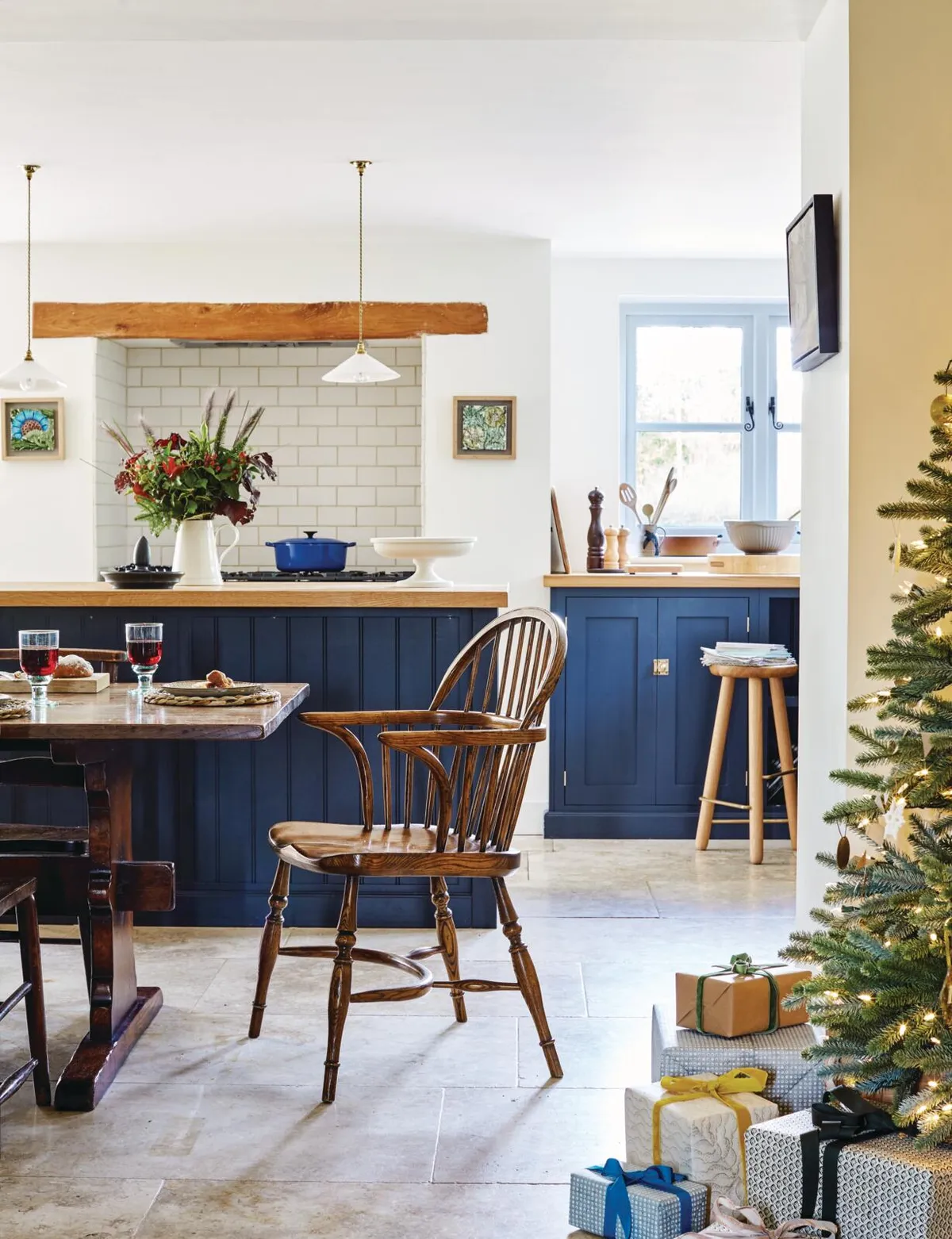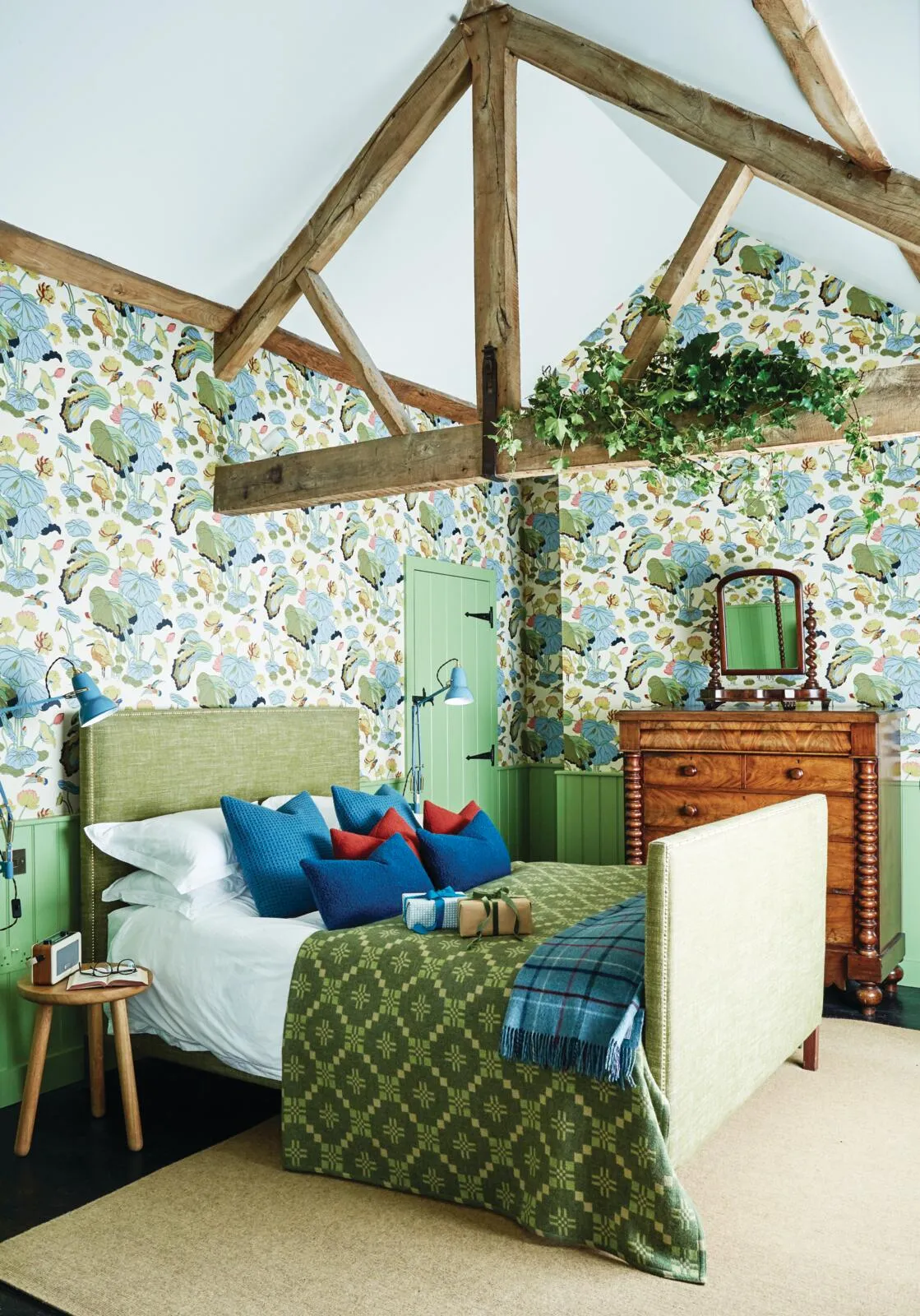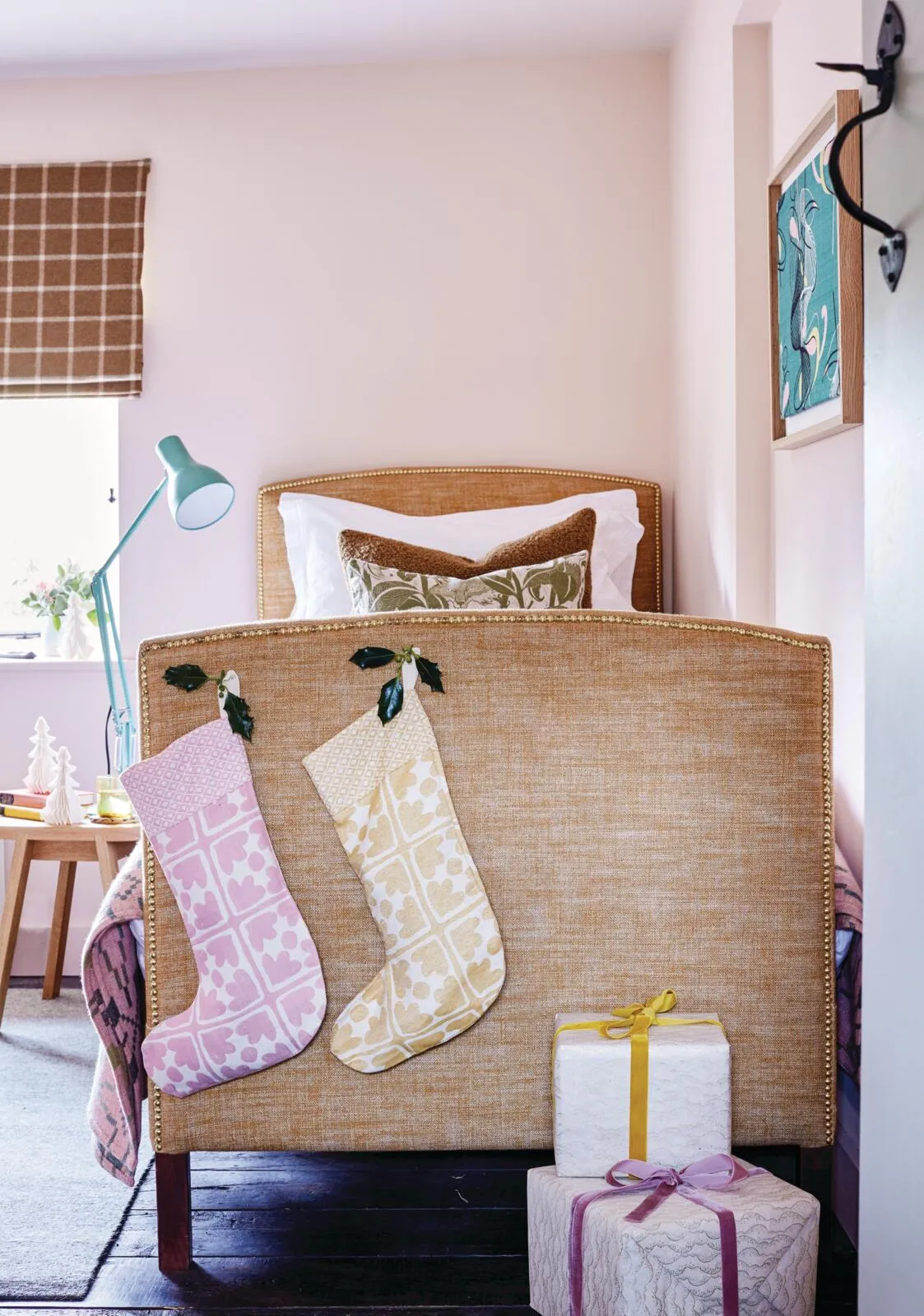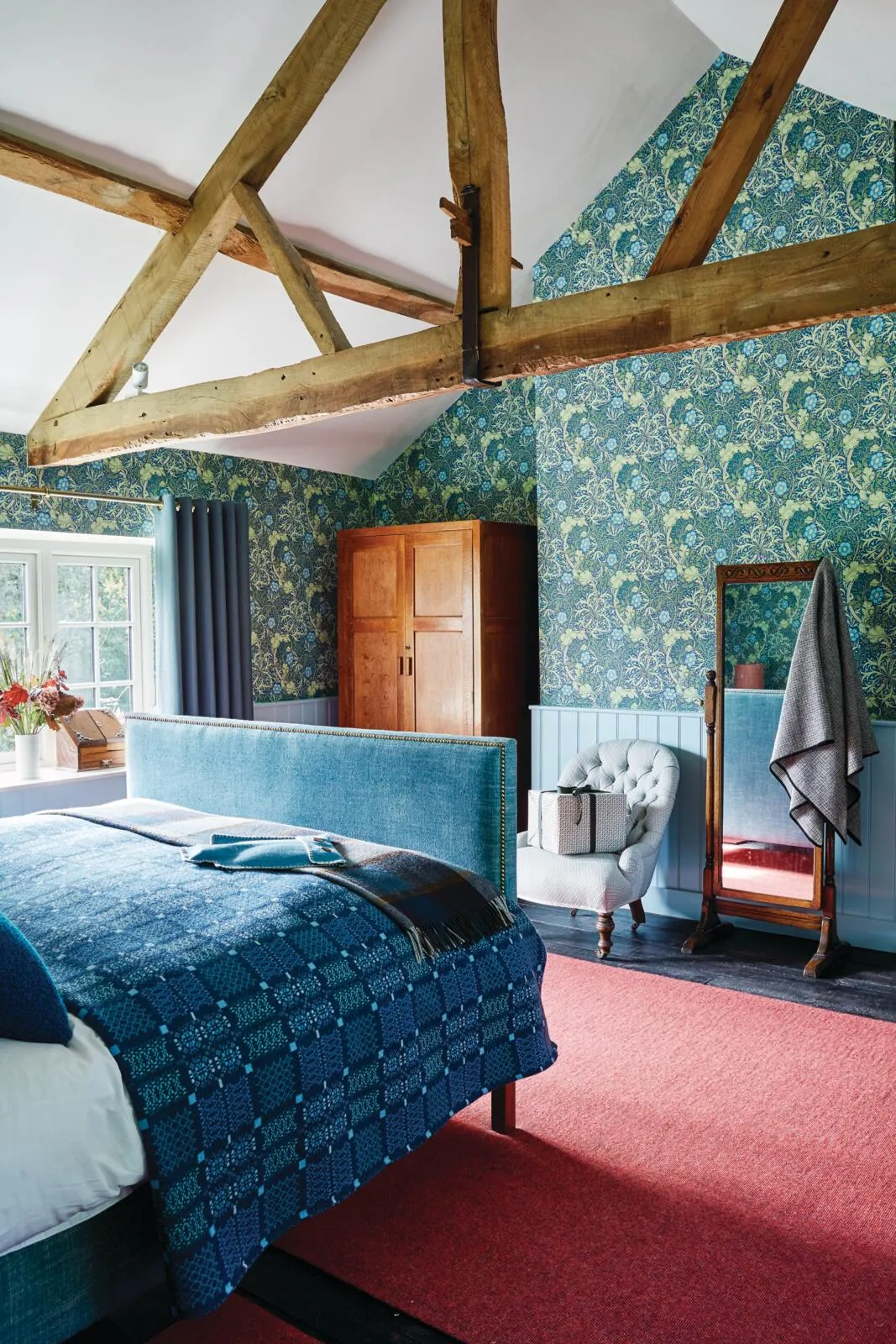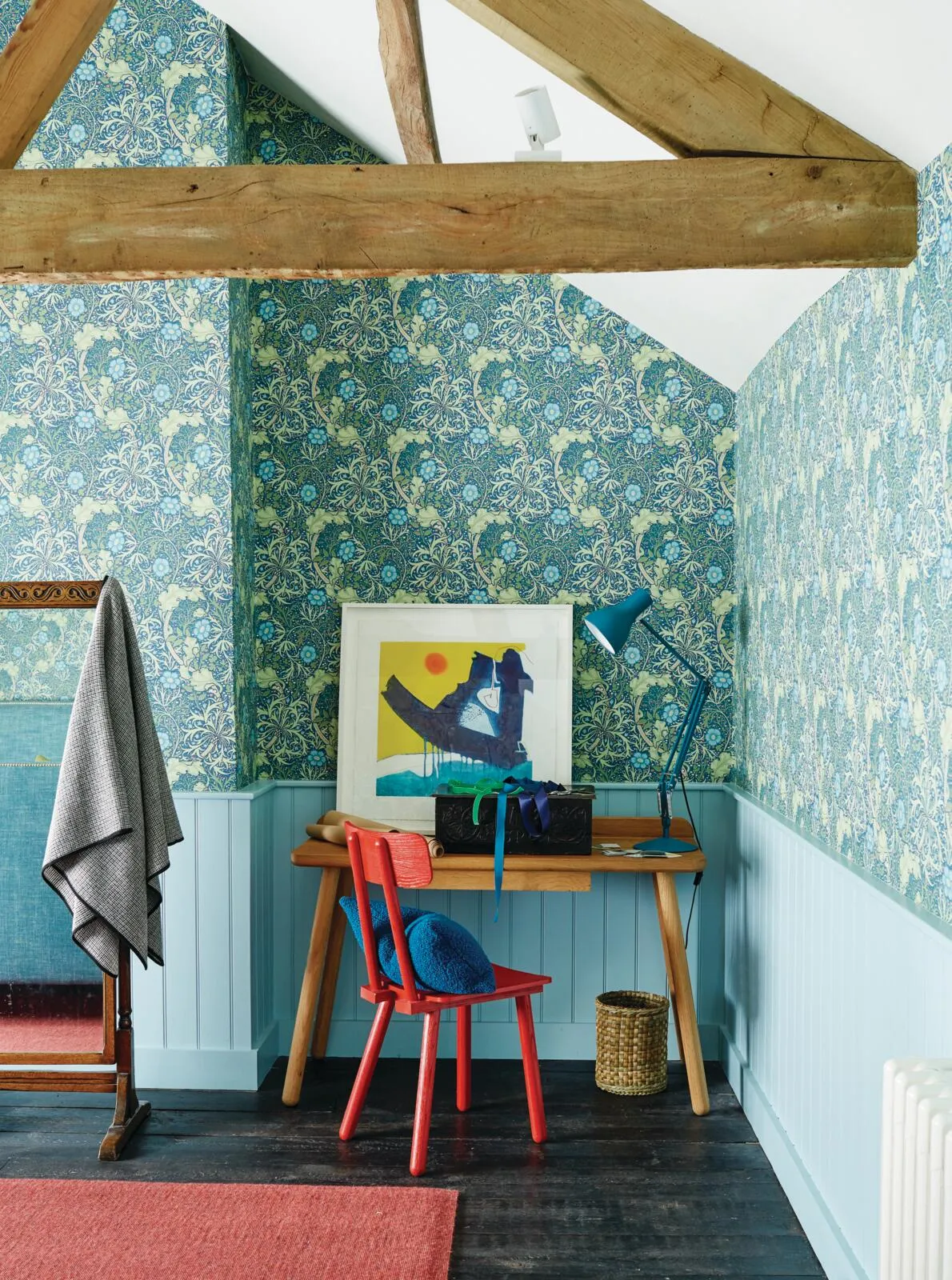A quick scan of the moody hallway of Amanda and Ed Bannister’s Wiltshire cottage takes in a Victorian grandfather clock, a Restoration-period mule chest and a rather wacky spider, by Danish ceramicist Malene Hartmann Rasmussen, scuttling across a wall.
Peer into the snug to your left and you will note taxidermy birds and butterflies, an Arts and Crafts oak occasional table and a colourful GP&J Baker sofa. Further into the cottage, in the living area there’s a 17th-century carved oak coffer teamed with a mid-century Ercol sideboard, a Russell Pinch sofa and a Ptolemy Mann rug.
Rarely do you see old and new furniture and homeware converge so beautifully. This confluence of antiques and contemporary design is the union of the couple’s ardent interests. ‘I love craft and design,’ says Amanda, a media lawyer and amateur potter (she has a studio in the garden), ‘and I’m obsessed with chairs. I love a Windsor, but I will love a modern Norman Cherner chair too. Ed is interested in nature, botany and taxidermy. He has a sharp eye for antiques.’
So while Amanda collects contemporary craftwork and covets chairs, Ed frequents salesrooms online and in person. He seeks antiques and researches each of his finds so that he knows his Arts and Crafts from his art nouveau.
Amanda and Ed bought an old chapel next door to the cottage 17 years ago as a country retreat from London. They restored the property, but could not ignore the pretty, symmetrical abode a few steps from their door. Ed’s research has revealed that it was probably the baptist minister’s house. ‘There was an elderly lady living in one room of the cottage for years. We had a fantasy that one day we could own it, but when it did come on the market a few years ago, it had a silly asking price,’ says Amanda. ‘Someone else bought it and renovated it, but then decided to sell before it was finished.’
By Christmas 2016, the Bannisters realised the house could be theirs and so they bought the property, finished the renovations and decided to run it as a holiday let. This way, they could combine their hobbies in its decoration, but also share their appreciation of art and beauty with others. Those who stay at what is now called ‘The Craftsman’s Cottage’ can have a fully immersive experience in British craft, old and new.
You can cook in a deVOL kitchen, pour juice from a John Julian jug, cosy up by a Charnwood stove, sit in a 19th-century Windsor armchair, read an old book from the Victorian oak bookcase on the landing under an Anglepoise lamp, and hang your clothes in a 1930s Heal’s oak ‘gentleman’s’ wardrobe in one of the double bedrooms. What’s more, Ed has put together detailed information on almost every antique so you can discover the history of the item too.
The palette of the house echoes that of aestheticism, the late 19th-century arts movement that championed pure beauty and ‘art for art’s sake’, just as the Bannisters do. In true aesthetic style, the colours the couple have chosen are strong, yet simple shades that mirror those found in nature – rich, earthy tones of leaf and moss green, pinks, browns, burnt yellows, russet and bright blues. ‘November and December are the best time of year for colour in the countryside and the palette we chose reflects those months,’ says Amanda. ‘This house will sing in November through to Christmas.’
There is a satisfying symmetry to seeing a framed William De Morgan tile on the wall in the kitchen opposite the porcelain snowflakes that Amanda made for the Christmas tree. As an advocate for craft and making, not only does she share the ideals of the movement that revered the decorative arts and bemoaned mass production, Amanda has herself become an artisan. She now makes beautiful everyday objects, such as ceramic plates, jugs and lamp bases, some of which are dotted around the cottage.
Crucially, Amanda and Ed want this house and its contents to endure, to stand the test of time and to live on, much like the antiques within its walls. ‘I’m hoping that we’ve created a timeless design for the cottage,’ she says. ‘It spans so many decades, and so many different aesthetic periods are covered. I want it to gently fade. I want it to sit and become more comfortable. After all, well-made things only get better with age.’
